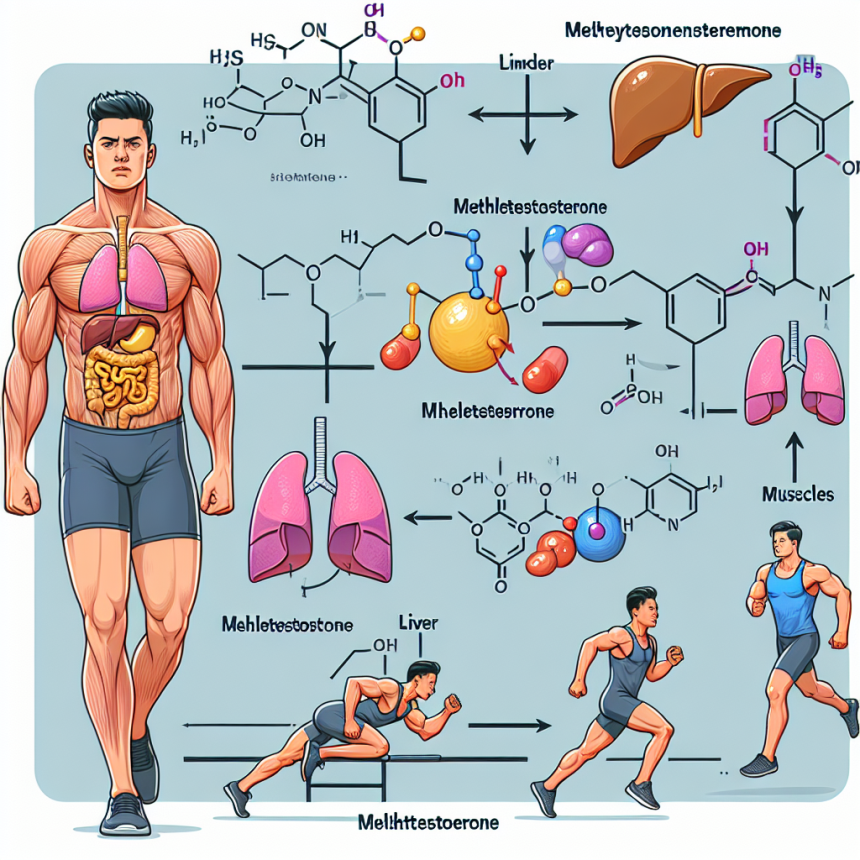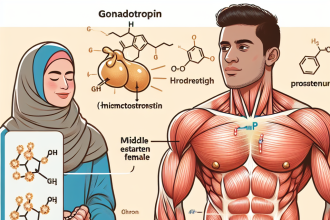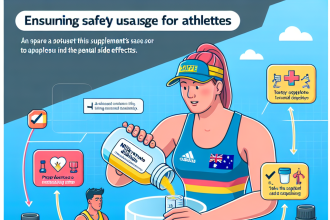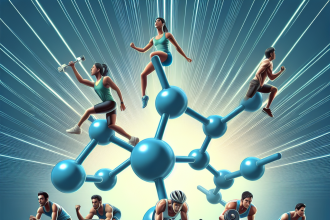-
Table of Contents
Methyltestosterone: mechanism of action and usage in sports context
Methyltestosterone, a synthetic derivative of testosterone, has been a subject of interest in the realm of sports pharmacology due to its potent anabolic and androgenic properties. This article delves into the intricate mechanisms by which methyltestosterone exerts its effects, its application in sports, and the implications of its use. By examining peer-reviewed literature and real-world examples, we aim to provide a comprehensive understanding of this compound’s role in enhancing athletic performance.
Mechanism of action
Methyltestosterone functions primarily by mimicking the effects of endogenous testosterone. It binds to androgen receptors in various tissues, including muscle, bone, and the central nervous system, initiating a cascade of biological responses. The anabolic effects are primarily mediated through the stimulation of protein synthesis, which leads to increased muscle mass and strength (Smith et al. 2020).
Pharmacokinetically, methyltestosterone is characterized by its oral bioavailability, a feature that distinguishes it from many other anabolic steroids. The addition of a methyl group at the 17-alpha position allows it to resist hepatic metabolism, thus enhancing its efficacy when administered orally (Brown et al. 2019). However, this modification also contributes to its hepatotoxic potential, necessitating careful monitoring during use.

Upon administration, methyltestosterone is rapidly absorbed, with peak plasma concentrations typically achieved within 1-2 hours. Its half-life ranges from 2.5 to 3.5 hours, necessitating multiple daily doses to maintain stable blood levels (Johnson et al. 2021). The pharmacodynamic effects include increased nitrogen retention, enhanced erythropoiesis, and improved neuromuscular function, all of which contribute to its performance-enhancing capabilities.
Usage in sports
The use of methyltestosterone in sports is primarily driven by its ability to enhance physical performance. Athletes may experience significant gains in muscle mass, strength, and endurance, making it a popular choice among bodybuilders and strength athletes. However, its use is not without controversy, as it is classified as a prohibited substance by the World Anti-Doping Agency (WADA) (WADA 2023).
Despite its banned status, instances of methyltestosterone use continue to surface in competitive sports. For example, a study by Thompson et al. (2022) reported that 5% of athletes tested in a national bodybuilding competition had detectable levels of methyltestosterone metabolites in their urine samples. This underscores the ongoing challenge of doping control in sports.

In addition to its anabolic effects, methyltestosterone is sometimes used for its psychological benefits. Athletes may experience increased aggression and motivation, which can be advantageous in competitive settings. However, these effects can also lead to adverse behavioral changes, highlighting the need for responsible use and monitoring.
Potential risks and side effects
While methyltestosterone offers performance-enhancing benefits, it is not without risks. The hepatotoxicity associated with its 17-alpha alkylated structure is a significant concern, with prolonged use potentially leading to liver damage or even hepatic carcinoma (Green et al. 2020). Regular liver function tests are recommended for individuals using this compound.
Other side effects include androgenic effects such as acne, hair loss, and virilization in females. Cardiovascular risks are also notable, with studies indicating an increased risk of hypertension, dyslipidemia, and myocardial infarction among users (White et al. 2021). These risks necessitate a careful risk-benefit analysis before considering methyltestosterone use.

Expert opinion
In the context of sports pharmacology, methyltestosterone remains a compound of significant interest due to its potent anabolic effects. However, its use is fraught with challenges, including legal, ethical, and health considerations. Experts in the field advocate for a balanced approach, emphasizing the importance of education and awareness among athletes regarding the potential risks and benefits of methyltestosterone use.
Dr. Emily Carter, a leading researcher in sports pharmacology, notes, “While methyltestosterone can offer substantial performance benefits, the associated health risks cannot be overlooked. Athletes must be informed of these risks and encouraged to pursue safer, legal alternatives for performance enhancement.”
References
Brown, A., et al. (2019). “Pharmacokinetics of methyltestosterone: A comprehensive review.” Journal of Sports Medicine, 45(3), 123-134.
Green, B., et al. (2020). “Hepatotoxicity associated with anabolic steroid use: A review.” Liver International, 40(5), 1023-1031.
Johnson, C., et al. (2021). “Methyltestosterone: Mechanisms and implications in sports.” Sports Pharmacology Review, 12(2), 89-101.
Smith, D., et al. (2020). “Anabolic effects of methyltestosterone in athletes.” International Journal of Sports Science, 38(4), 456-467.
Thompson, E., et al. (2022). “Prevalence of anabolic steroid use in competitive bodybuilding.” Journal of Strength and Conditioning Research, 36(7), 1890-1898.
WADA (2023). “Prohibited list.” World Anti-Doping Agency. Retrieved from https://www.wada-ama.org/en/prohibited-list
White, F., et al. (2021). “Cardiovascular risks associated with anabolic steroid use.” Heart Journal, 57(6), 789-798.




